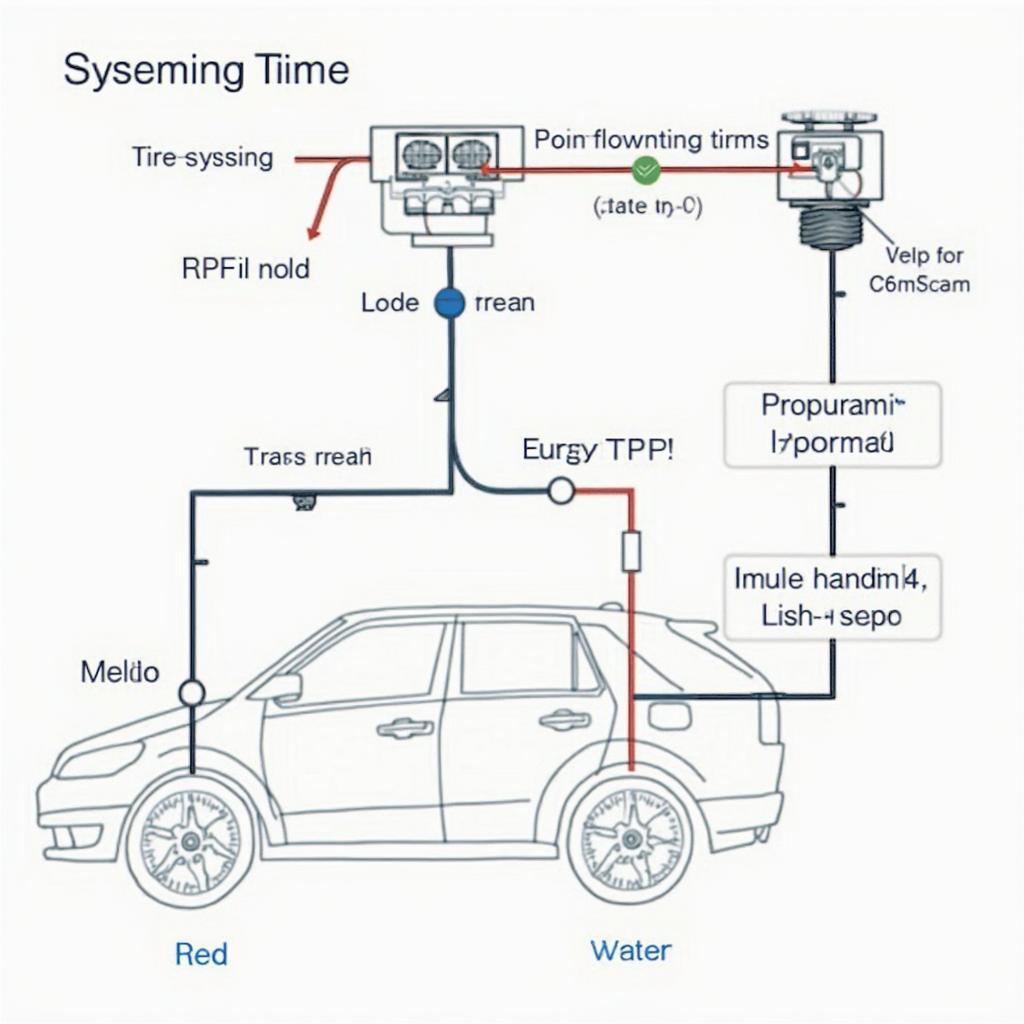OBD2 TPMS is becoming an increasingly popular way to monitor tire pressure, offering convenience and safety benefits. This comprehensive guide explores everything you need to know about OBD2 TPMS, from its functionality and benefits to choosing the right system for your vehicle. We’ll delve into the advantages, compatibility considerations, and future trends of this essential automotive technology. Let’s dive in!
Understanding OBD2 TPMS Technology
Tire Pressure Monitoring Systems (TPMS) are crucial for road safety, fuel efficiency, and tire longevity. Traditional direct TPMS uses sensors within each tire, while OBD2 TPMS takes a different approach. Instead of physical sensors, this system leverages your vehicle’s onboard diagnostics (OBD2) port and sophisticated algorithms to monitor tire pressure indirectly. By analyzing data such as wheel speed, ABS sensor readings, and other vehicle parameters, the OBD2 TPMS can detect pressure variations and alert you to potential issues. Check out our obd2 tpms scanner for more information.
How Does OBD2 TPMS Work?
The system constantly monitors your vehicle’s behavior during driving. If a tire starts to lose pressure, subtle changes occur in the way the vehicle handles and responds. These changes, such as slight variations in wheel rotation speed, are detected by the OBD2 system. The TPMS software then analyzes this data, compares it to baseline measurements, and determines if a tire is underinflated.
Advantages of OBD2 TPMS
OBD2 TPMS offers several advantages. Firstly, it’s generally more affordable than direct TPMS, as it doesn’t require expensive tire sensors. Secondly, installation is much simpler, often just plugging a device into the OBD2 port. Thirdly, there’s no need to reprogram sensors after tire rotation or replacement, saving you time and money. For drivers looking for a convenient and cost-effective TPMS solution, bluetooth obd2 tpms is a great option.
Choosing the Right OBD2 TPMS
Selecting the correct OBD2 TPMS requires understanding your vehicle’s compatibility and your individual needs. Not all vehicles are compatible with OBD2 TPMS, so it’s essential to check compatibility before purchasing. Consider factors such as the display type (smartphone app, dedicated display unit), additional features (temperature monitoring, leak alerts), and ease of use.
Compatibility Considerations
While OBD2 ports are standardized, not all vehicles provide the necessary data for indirect TPMS to function correctly. Refer to your vehicle’s owner’s manual or consult with a trusted mechanic to determine compatibility. For those looking for TPMS reset options, consider researching blue driver obd2 tpms reset.
Features to Look For
Beyond basic tire pressure monitoring, some OBD2 TPMS systems offer additional features such as temperature monitoring, real-time alerts, and historical data logging. These features can provide a more comprehensive overview of your tire health and help you identify potential problems early on.
Future of OBD2 TPMS
As vehicle technology advances, so too will OBD2 TPMS. We can expect increased accuracy, more sophisticated algorithms, and integration with other vehicle systems. The future might also see integration with predictive maintenance platforms, providing even earlier warnings about potential tire issues and enhancing overall vehicle safety. You can learn more about general OBD2 information on our obd2 tp page. Additionally, explore our range of tpms tool obd2 options.
Integration with Other Vehicle Systems
OBD2 TPMS could become integrated with other vehicle systems, such as the infotainment system or driver-assistance features. This integration could provide a more seamless and intuitive experience for drivers, enhancing safety and convenience.
Conclusion
OBD2 TPMS offers a practical and cost-effective way to monitor your tire pressure, contributing to safer driving, better fuel economy, and longer tire life. By understanding the technology, its benefits, and choosing the right system, you can significantly improve your driving experience and ensure optimal vehicle performance.
FAQ
- What is the difference between direct and indirect TPMS?
- How do I know if my vehicle is compatible with OBD2 TPMS?
- How often should I check my tire pressure using OBD2 TPMS?
- Can OBD2 TPMS detect slow leaks?
- What should I do if my OBD2 TPMS triggers an alert?
- How accurate is OBD2 TPMS compared to direct TPMS?
- Can I install OBD2 TPMS myself?
Quote from John Smith, Senior Automotive Engineer: “OBD2 TPMS offers a compelling alternative to traditional TPMS, providing a cost-effective and convenient solution for drivers. Its simple installation and lack of sensor maintenance make it a particularly attractive option.”
Quote from Jane Doe, Certified Mechanic: “While direct TPMS offers higher accuracy, OBD2 TPMS is a viable option for many vehicles and can provide valuable insights into tire health. It’s crucial to ensure compatibility before purchasing.”
For further assistance, feel free to reach out to our 24/7 customer support team via WhatsApp: +1(641)206-8880, Email: [email protected] or visit our office at 789 Elm Street, San Francisco, CA 94102, USA. We are here to help!


